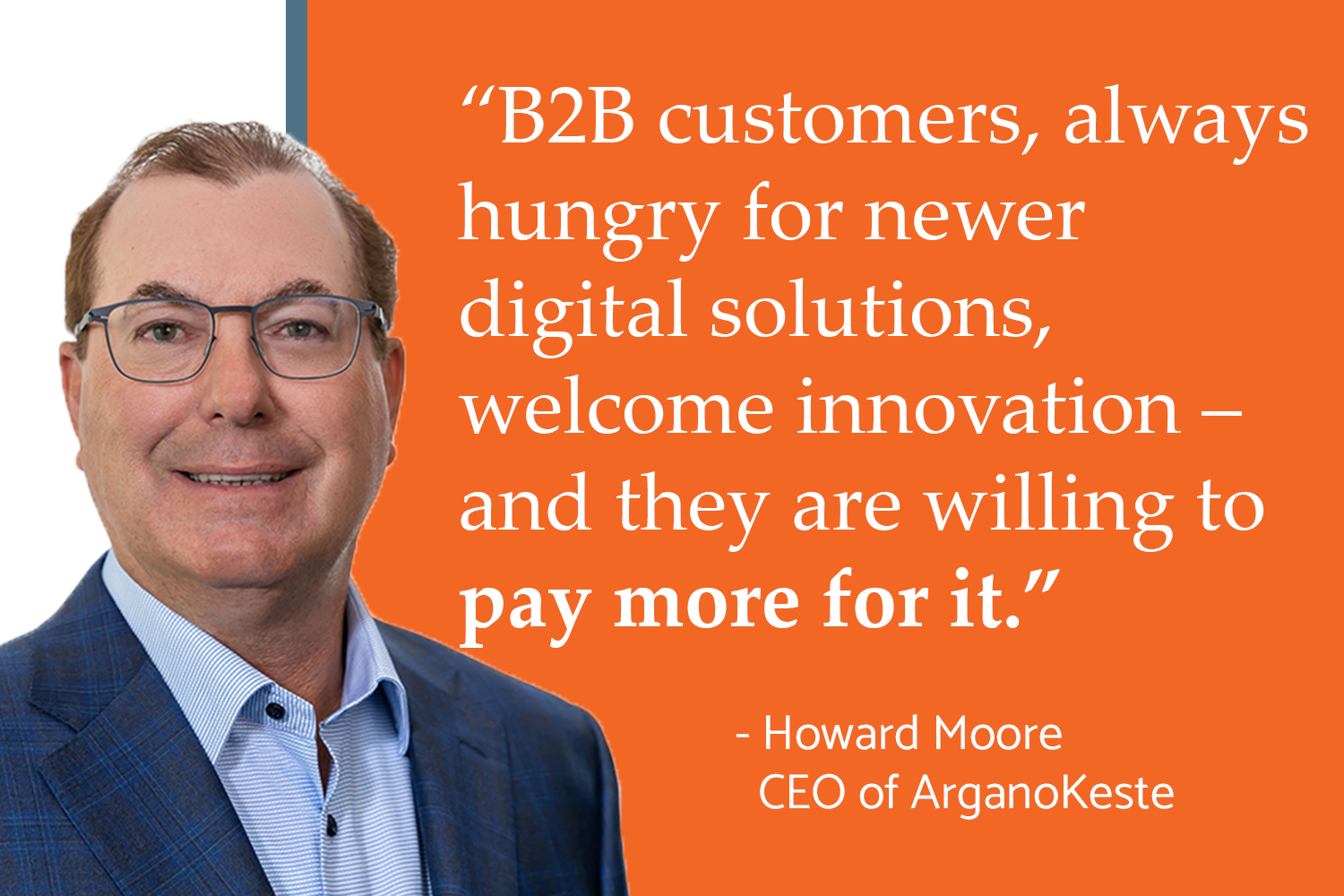3 Keys to Success in Digital Commerce
What if your best salesperson, we’ll call her Beverly, was available for every lead or every single customer-facing opportunity that you had?
“We need to break out the big guns. Let’s bring in Bev.”
“Bev” undoubtedly has those critical characteristics that make her extraordinary at her job—the ability to empathize with a customer’s needs, and naturally adjust to meet them.
She’s knowledgeable. Confident. The way she works and carries herself throughout the day doesn’t feel like “Sales.”
Organizations undergoing digital transformation are discovering that the investments they’ve made toward digital commerce success are like having their A-list salesperson managing every customer touchpoint. And it feels great.
Beyond ecommerce, digital commerce is defined as the buying and selling of goods and services using digital channels. Where this used to mean static webpages and shopping carts, it now factors in all of the people and processes involved in developing and servicing these transactions—including content creation, research, analytics, pricing, promotion, customer acquisition, and customer retention.
Today, in what’s become a digital transformation revolution, organizations worldwide are in the midst of integrating digital technology into every area of their business.
There are a lot of things to consider as you continue on this path, but we’d like to take just a brief moment to focus on 3 important areas to help your company keep pace.
1) Create a frictionless customer experience
The ideal customer experience is frictionless—one that makes it easy to purchase a product or service with as few clicks as possible, no matter whether you’re using a smartphone, tablet, or mobile app (think: the ability to access your shopping cart across all digital channels).
In essence, you’re not overwhelmed by unnecessary fields. Everything feels functional, and in what’s not always the case, the site also happens to be nice to look at.
This is price of entry, really. The things customers now fully expect.
To see the value of a customer journey that’s completely frictionless, look no further than Amazon’s 1-click order system. It instantly eliminated the biggest point of friction for completing an online purchase: the checkout process.
As you contemplate how to reduce friction in your own processes, consider the following touchpoints when targeting areas for improvement: contact forms, Live Chat, social media profiles, contact pages, and marketing emails.
Next, determine how many steps are involved for a customer in your buying or communication process. How easy is it to get to these specific touchpoints? How long does it take to get a response? Then evaluate how these touchpoints could be improved and who is responsible for making it happen. Finally, determine which of these things needs to take priority. Some solutions may just require quick fixes from a web designer, while others may be part of a broader approach.
Routinely evaluating your user experience is mandatory for any organization and can reap sizable rewards. According to Temkin Group, companies that earn $1 billion annually can expect to earn an additional $700 million within three years of investing in customer experience.
It’s an investment that pays off no matter what your business size.
2) Implement personalization wherever possible
Personalization in digital commerce is about making sure you have systems in place that can learn and adapt to how customers want to shop.
It’s about showing your customers that you know them … and that you can help meet their needs. Based on customer browsing behavior, purchase history, and other data, you’re able to extend specific offers, product recommendations, and relevant content.
A big benefit of personalization is the ability to optimize the customer journey.
Based on how customers arrived, you can enhance the experience by anticipating their intent and saving them considerable time. If a customer abandons a cart, you can send a friendly reminder or a timely email with a special discount or free shipping.
Artificial intelligence is making more and more customized experiences possible, giving you the ability to determine what information is used, how it’s used, and where you want personalization to take place. You get real-time insights to help improve the shopper experience, optimize pricing, and forecast demands.
“80% of shoppers are more likely to buy from a company that offers personalized experiences.” –Epsilon Data Management, LLC
Without personalization, customers are frequently unable to find the products they want. They waste time searching on your site, wind up buying something that doesn’t fit their needs, or end up bailing altogether. This is particularly troubling if you actually had the exact item a customer needed but just weren’t able to serve it to them.
A personalized experience not only takes care of immediate customer needs but can also reap benefits. Studies show that 44 percent of shoppers have become repeat buyers after receiving a personalized experience. They’re also more likely to make impulse purchases.
3) Invest more in touchless technology
As the best salesperson instinctively knows, one of the biggest needs customers have is to know that you care about them.
At no time has this been more evident than during the current health crisis. In response, countless organizations have shown empathy for their customers over the last several months by demonstrating concern for their safety.
At the center of this movement is touchless technology.
In short, touchless technology has revolutionized the way we shop. In February of 2020, if you owed somebody money or split a lunch tab, you likely handed them cash. Sure, you were aware of digital methods for making payments, but it was a technology that you were content to put off.
By the very next month, the world was suddenly forced to think about social distancing and limiting the things we touched. We had to adapt quickly.
Businesses have risen to the challenge.
“Click and collect,” the process of buying online and picking up in-store, was already gaining speed even before COVID-19. The pandemic merely rocketed the trend into hyper mode—introducing curbside service offered by businesses, restaurants, and grocery chains in staggering numbers.
“It literally would have taken years to do that if not for this crisis,” says Stephen Frieder, president of the Americas for Adobe. “But now [companies] are going all-in on digital and leveraging the connectivity of their mobile apps along with analytics and personalization technology to really understand consumer behavior as part of those curbside pickup programs.”
for Adobe. “But now [companies] are going all-in on digital and leveraging the connectivity of their mobile apps along with analytics and personalization technology to really understand consumer behavior as part of those curbside pickup programs.”
According to grocerydive.com, consumers have embraced “click and collect” because of its lower fees and the flexibility of when an order can be picked up. It also supports the familiar routine of driving to the store and gives customers the opportunity to pick up incremental purchases.
It’s a win for business, too, because they can maintain control over their operation without having to yield to a third-party delivery platform.
Beyond retail and grocery chains, virtually every industry has witnessed seismic changes in digital technology.
“The global pandemic has accelerated the adoption of digital banking and commerce by five years,” says Mike Kresse, senior vice president of card payments and money movement at FIS. “The winners will be the ones that bring this full experience to life for their customers.”
Marketers and organizations that were already leaning into digital commerce with advancements like touchless technology have been the first to adapt quickly, meet customer needs, and maintain or grow their business. A next step is to extend touchless options across channels to include voice search, video, and other technologies—ground floor opportunities for your business.
For more on how you can be sure your digital transformation efforts are focused in the right direction, and how you can successfully prepare your business for the future of digital commerce, contact us today.








